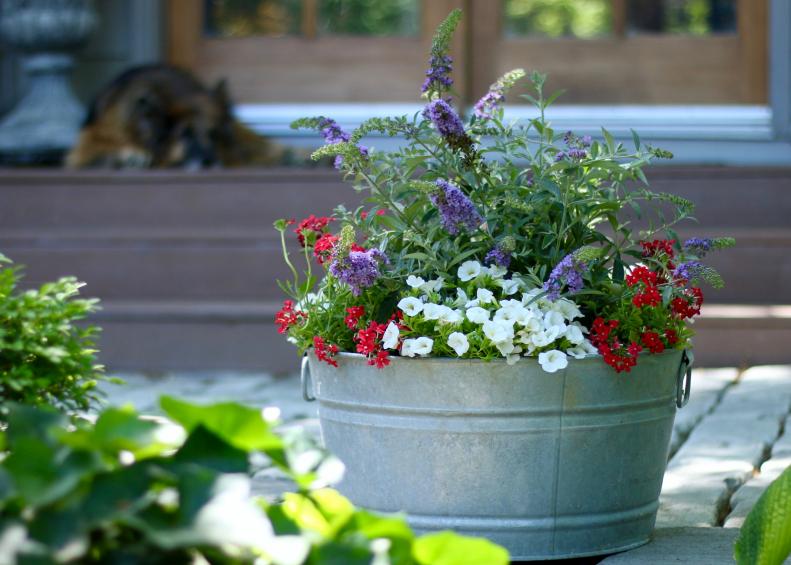1 / 15
Photo: ProvenWinners.com
Butterfly Bush
Shrubs are the ultimate best buy when it comes to filling container gardens. They deliver strong color all season long, even year-round in warmer zones. After spending their first season in a container, you can transition shrubs to a permanent home in a planting bed, where they’ll enhance your landscape for years to come. It’s not hard to design container gardens with a few shrubs in the mix. This galvanized tub features a patriotic theme with red Superbena Scarlet Star verbena, Superbells White calibrachoa and blue-purple dwarf butterfly bush (Lo & Behold ‘Lilac Chip’ Buddleia x), which grows 2 feet tall — an ideal shrub size for a pot. Hardy in Zones 5-9.









